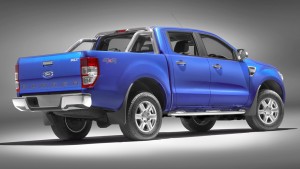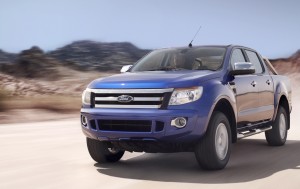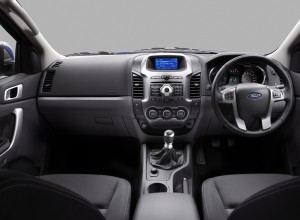
Ford's new Ranger is a stylish small pickup truck that will be sold almost everywhere in the world except the U.S.
Ford still says that we won’t see it in North America, but the automaker has officially introduced the new Ranger small pickup truck that will be sold almost everywhere else.
Replacing the oldest mainline vehicle design currently for sale in the U.S., Ford will build the new truck in three factories in Thailand, Argentina and South Africa and sell it in 180 markets around the world.
The new truck replaces two Ranger platforms, building on the automaker’s “One Ford” plan to build similar vehicles for markets across the world.
Like most pickup truck lines, the Ranger will be sold in a wide variety of configurations, including three cab body styles, 4×2 and 4×4 drivetrains, two ride heights and up to five trim choices, depending on market. Three new engines, including two diesels, will power the trucks. New 6-speed automatic and manual transmissions will back up the diesels while the gas engine will come only with a 5-speed manual.
The domestic small truck market has shrunk so much, that Ford has decided not to offer the Ranger here. Instead, it will pitch the F-150, which will be offered with a 3.7-liter V-6, as an alternative for buyers considering a small truck.
The Ranger made its worldwide debut last week at the Australian International Auto Show. Production of the new Ranger will begin in less than a year as a 2012 model.
The truck was designed at Ford of Australia in Melbourne.
The new engines include:
- A new 2.2-liter Ford Duratorq 5 cylinder diesel engine with power output of 148 horsepower and peak torque output of 277 lb.-ft. of torque.
-

The Ranger will be sold in a wide variety of configurations including three cab styles, rear-wheel drive and four-wheel drive.
A new 3.2-liter Ford Duratorq inline 5 cylinder diesel engine with power rated at 197 horsepower and 347 lb.-ft. of torque.
- A 2.5-liter Ford Duratec four cylinder gasoline engine makes 164 horsepower. It can be configured for ethanol flexible fuel capability or aftermarket upfitted to run on CNG or LPG.
Dating to the days when Ronald Reagan was president, the U.S. Ranger has been largely unchanged since it was introduced in early 1982 as a 1983 model. Production in St. Paul, Minn., is scheduled to end in 2011. Throughout the years, there have been many engine changes, plus styling updates, but the structure of the truck has mostly stayed the same.


